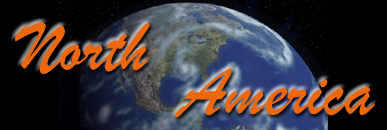

Text and photos courtesy of Michelle Mock
The Middle Ages
I grew up associating the "Middle Ages" with kings, queens, knights and castles in Europe. Again, my young brain had grabbed on to a concept and thought that everything related to the Middle Ages was about Europe. Since Columbus had not yet "discovered America", I didn't really imagine that America existed. Again, I was really wrong!
Around the year 500, the Hopewellian mound-builders began to decline and the Mississippi mound-builders started to appear around the southern Mississippi River. In Central America, the Teotihuacán culture reached its peak. Its wealth came from agriculture, crafts and trade. They slowly began to decline between 650 and 850. During that same time, the Huastecan culture rose in Mexico.
During the 700s, the farmers began to build towns in the Mississippi Valley. In the middle of the towns, they built flat topped mounds. Upon the mounds they built temples or houses for the chief. Hohokam farming communities in the southwest (what is now known as Arizona) also built platform mounds. Some of the ball games they played were similar to those played by the Mayan people of Mexico. Another group of farmers, called Anasazi, emerged in southwestern North America. The desert tribes of the southwest began building villages known as pueblos. These villages had rooms stacked one above the other... early apartment complexes!! The Anasazi people built clusters of buildings high into the cliffs. These dwellings could only be reached by ladders. They wove cloth, made pots using a turning wheel and worked with turquoise and other stones.
While more tribes and communities grew in what is today the United States and Canada, the Mayan civilization collapsed in Central America. The Mayan culture moved north to the Yucatán peninsula around the year 900. The Toltecs moved through Mexico destroying towns around the Teotihuacán and invaded Mayan territory. About the same time, the Mixtec culture arose in Mexico.
In 1000, Leif Ericsson, son of the Viking Eric the Red, explored along the coast of North America. The Vikings were probably the first Europeans to set foot in North America, landing in what is now Newfoundland, calling it "Vinland". This occurred almost 500 years before Columbus "discovered" it when he landed on an island in the Caribbean. During this same time period, the Hopewell people discovered how to create designs etching with acid. The Northern Iroquois people and begun to settle in the area surrounding the Great Lakes and along the St. Lawrence River. In the Arctic, the Thule Eskimos began to spread across the region.
The Toltec civilization was destroyed by the Chichimec people around 1170. About 1190, the Mayan civilization began to rise again, but by 1300, the constant warfare among the Mayan led to the decline of their civilization for a second time. Further north, the Mississippians continued to develop. Their culture was very much influenced by Mexico. Pueblo builders around North America reached their peak around 1200 but by 1300, their pueblo building went into decline. This may have been cause by drought and the arrival of the Athabascan people migrating from the northwest. By 1500, the Athabascan Indians had completely take over the southwest. Around 1200, the Aztecs began to found small states in Mexico. By 1300, the Aztecs had arrived in the Valley of Mexico and by 1325 they were a large, organized empire. The Aztec culture was very advanced, especially in science, art, architecture and agriculture.
The Mayan civilization came to an end around 1460. In 1492-1493, Christopher Columbus finally arrived in the "New World", which wasn't really so "new", was it? A more appropriate term was coined by the British: "new found land". In the summer of 1497, John Cabot landed on the Newfoundland coast, claiming it for England. This was the first English claim on land which was to become part of Canada.
The term "New World" actually did not come about until a few years later when Amerigo Vespucci, an Florentine (Italian) navigator explored South America. In 1507, Amerigo’s "New World" became known as America.
| Home | Contact Us | Credits | Sitemap |
© 2006 - Imagiverse Educational Consortium